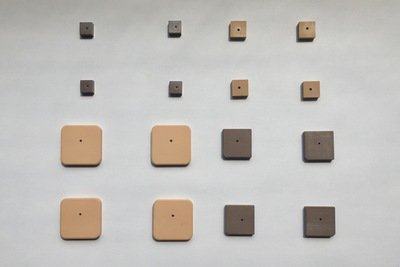In the full spectrum of electromagnetic radiation, the very high frequency (30~300MHz) to near infrared (750GHz) range is usually called microwave. General information often defines the microwave band as 300MHz~3000GHz, and its wavelength range is 1m~0.1mm.The microwave signal has the following characteristics due to its extremely high frequency and extremely short wavelength:
① Due to the high frequency and large amount of information, it is very beneficial to the application in the field of communication technology. At present, the usable band included in microwave communication has exceeded 1000 times of the entire long, medium and short band.
②It can propagate in a straight line, has strong propagation direction, and high energy and strong reflection ability to metal targets. Therefore, it is helpful to improve the accuracy of launching and tracking targets in radar navigation.
③ It has strong penetrating and absorbing capabilities for different media, so that it can penetrate the high-altitude ionosphere satellite signal, perform microwave medical diagnosis, microwave flaw detection, and serve as microwave absorbing material and heating element.
④The digitalization of microwave equipment can realize the confidentiality of communication.The way to realize the miniaturization, high stability and low cost of microwave equipment is the integration of microwave circuits. Due to the large mass of metal resonant cavity and metal waveguide, it greatly limits the development of microwave integrated circuits, and microwave hybrid integrated circuits composed of resonators made of microwave dielectric ceramics, microwave tubes, microstrip lines, etc., can make the device size up to millimeters. This makes microwave ceramics the basis and key material for achieving microwave control functions. Its application is roughly divided into two aspects, two different performance requirements:
One is the functional ceramics used in dielectric resonators, which are used for frequency stabilization components in solid-state oscillators including band-pass filters, frequency dividers, and modems; the other is used in microwave circuits dielectric ceramics, including dielectric substrates, dielectric waveguides, microwave antennas and microwave capacitors used in microwave integrated circuits (MIC).
Microwave ceramic medium is the basic and key material in microwave circuits and can be applied in various aspects. Similar to the indispensable LC circuits such as oscillators, filters, amplifiers, etc. In general circuits, can be used as a dielectric resonator, and secondly, it can be used as a dielectric antenna for collecting or storing microwaves. In addition, it can also be used for dielectric waveguides that control the transmission direction of microwave signals, as well as microwave capacitors for coupling between circuits or components, and even substrates and bottom plates that support circuits, components, and insulation.
Since the volume of the metal resonant cavity cannot meet the requirements of miniaturization and integration, some high-permittivity ceramic bodies and the free space boundary can refract and reflect microwave signals, and are easy to integrate and have low cost, which shows that they important position.
With the development of 5G technology, ceramic dielectric filters have gradually replaced metal cavity filters to become the mainstream. In addition, the integration and componentization of microwave relays and global satellite communication systems have made the development of microwave ceramics face severe challenges.

Microwave dielectric ceramics







